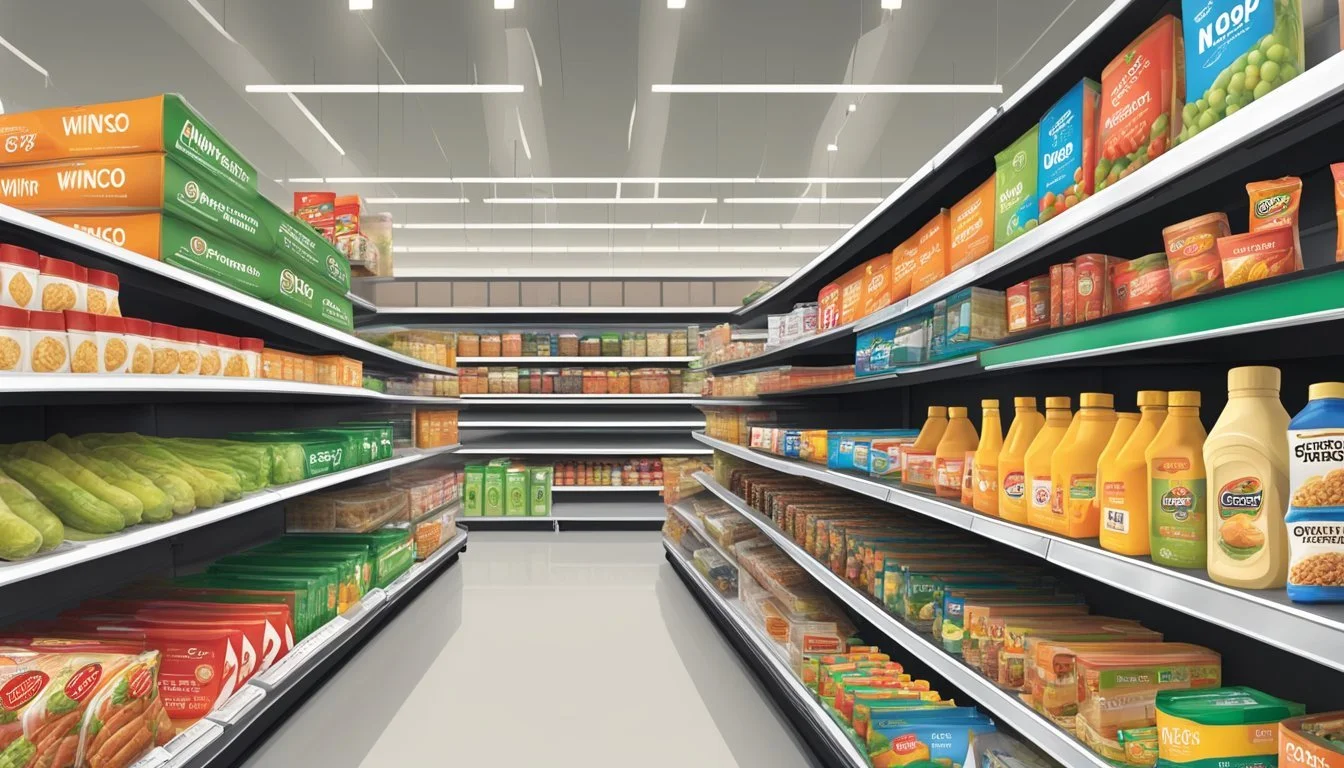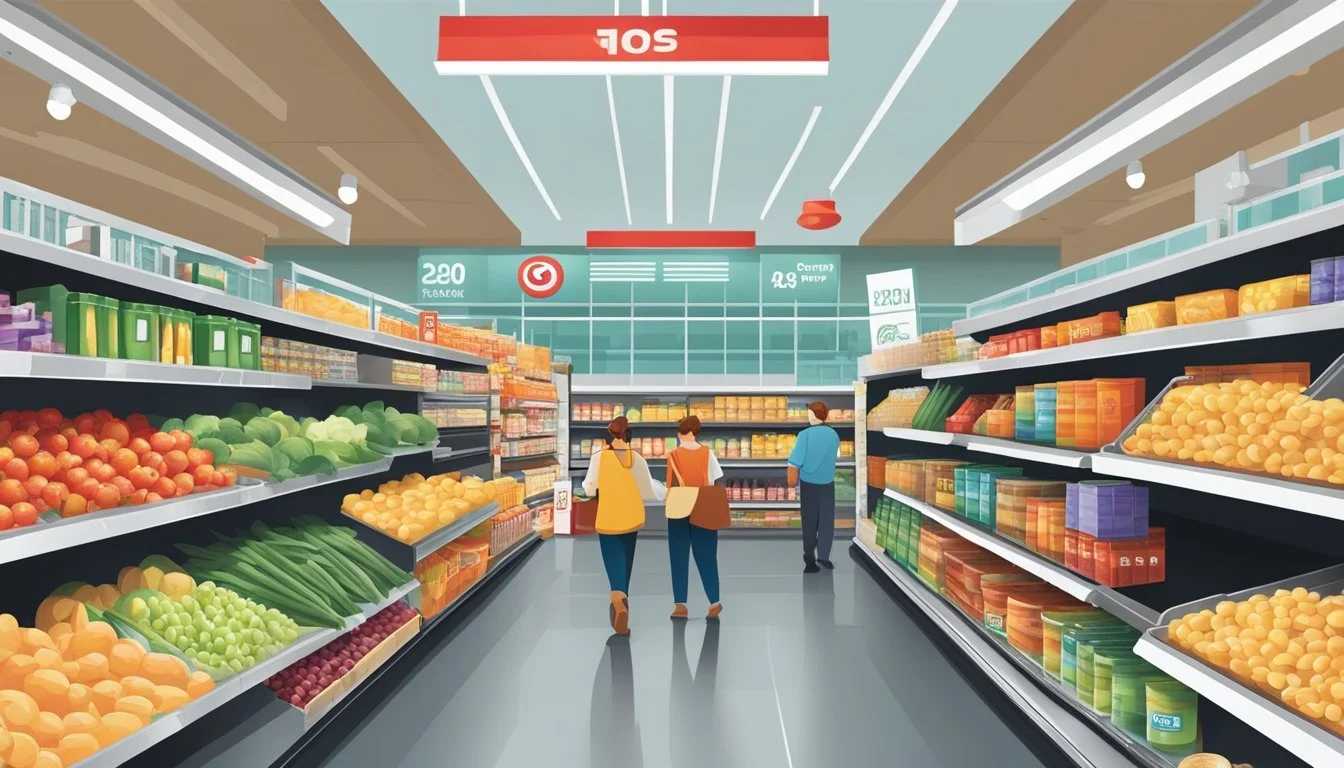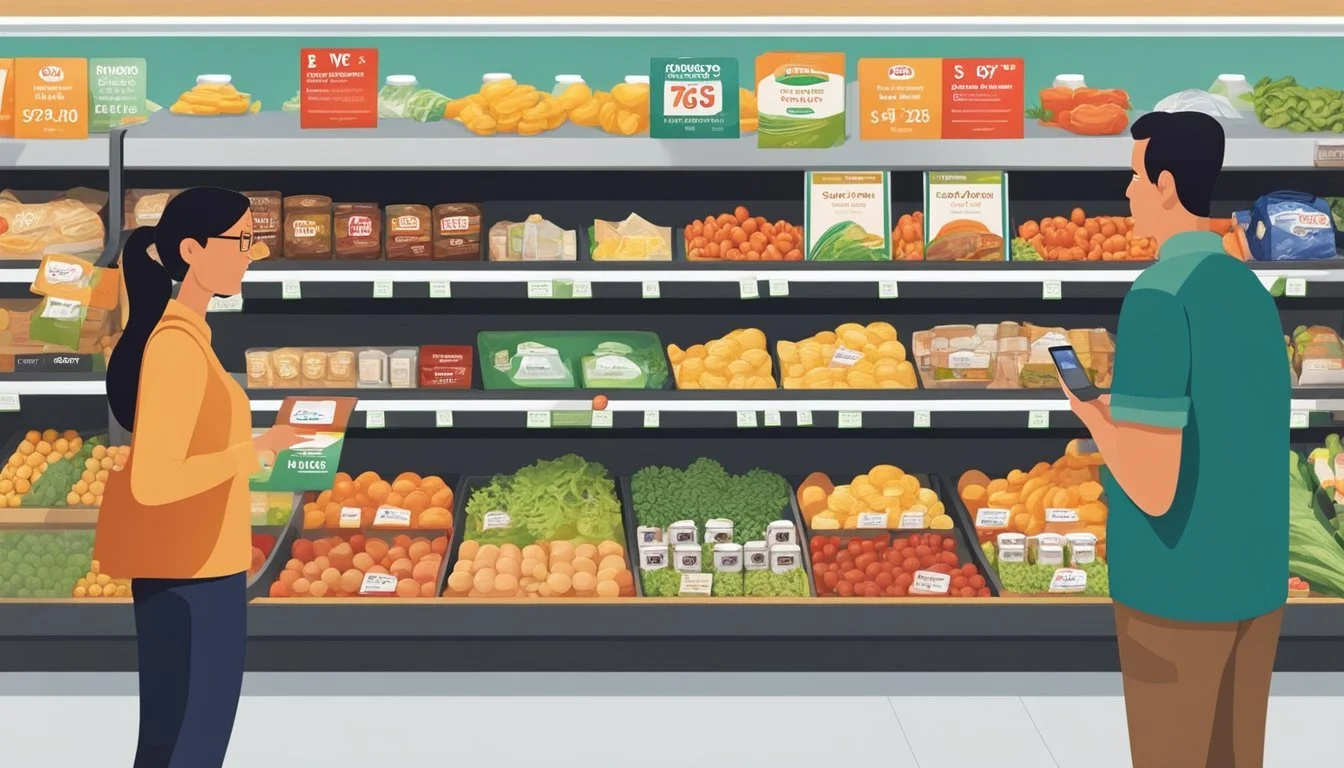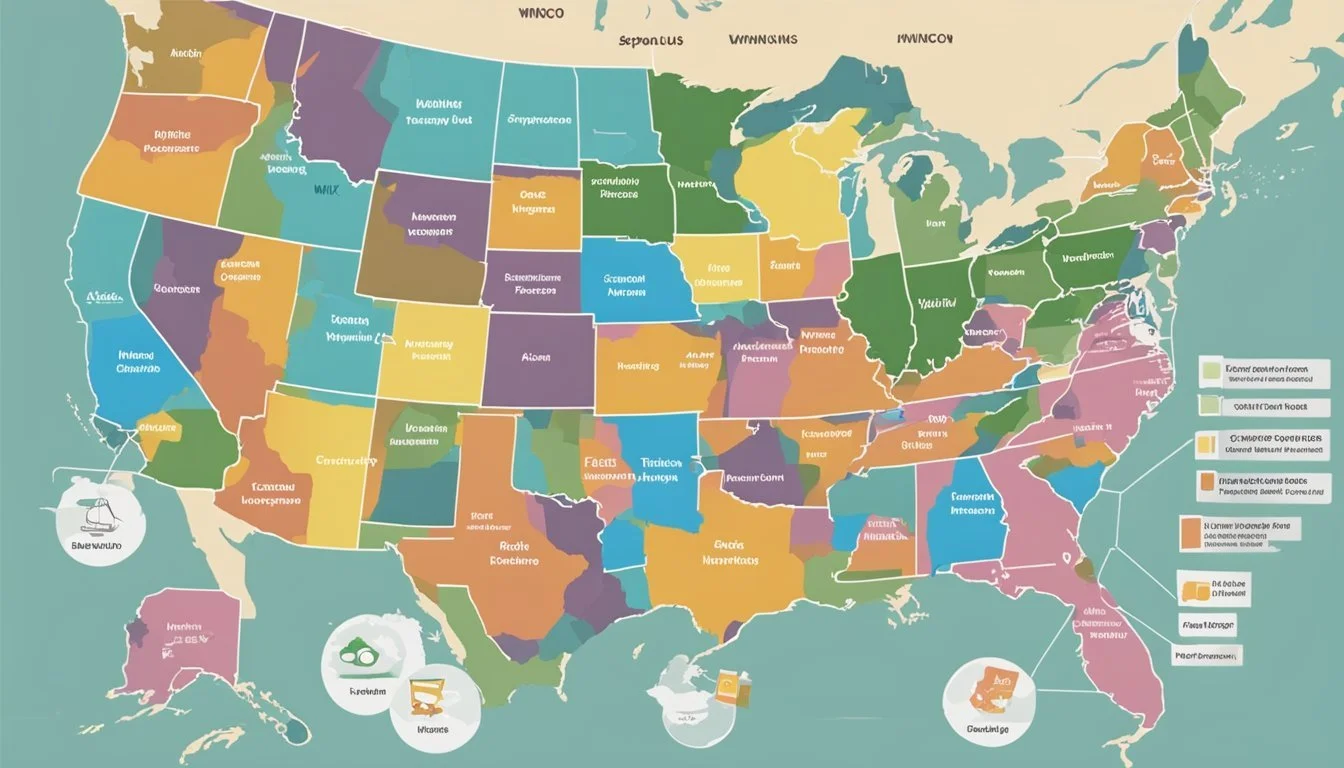Target vs WinCo Foods
A Comprehensive Comparison of Prices, Selection, and Shopping Experience
Target and WinCo Foods are two popular grocery store chains that cater to different shopping needs and preferences. While Target offers a wide range of products beyond groceries, WinCo Foods focuses primarily on providing affordable grocery items. Both stores have their strengths and appeal to different types of shoppers.
WinCo Foods consistently offers lower prices on groceries compared to Target, with potential savings of up to 29% on average. This significant price difference makes WinCo an attractive option for budget-conscious consumers looking to stretch their grocery dollars. WinCo achieves these low prices by buying directly from farmers and manufacturers in bulk, passing the savings on to customers.
Target, on the other hand, provides a more diverse shopping experience with its extensive selection of household goods, clothing, electronics, and other non-grocery items alongside its grocery offerings. This one-stop-shop approach appeals to customers who value convenience and variety in their shopping trips. The choice between Target and WinCo Foods ultimately depends on individual priorities, whether it's saving money on groceries or enjoying a broader shopping experience.
Comparative Overview of Target and WinCo Foods
Target and WinCo Foods represent two distinct approaches to retail and grocery shopping in the United States. Their histories, store formats, and business strategies offer unique shopping experiences for consumers.
History and Expansion
Target started as Goodfellow Dry Goods in 1902, later rebranding and expanding nationwide. The company now operates over 1,800 stores across the U.S., offering a wide range of products beyond groceries.
WinCo Foods began as Waremart in 1967 in Boise, Idaho. It has grown more slowly but steadily, focusing on the western United States. WinCo currently operates about 130 stores in 10 states, maintaining a regional presence.
Target's expansion strategy involves urban and suburban locations, while WinCo tends to favor suburban areas with larger store footprints.
Store Formats and Layouts
Target stores typically range from 80,000 to 175,000 square feet. They feature wide aisles, bright lighting, and a department store layout with groceries integrated into the overall floor plan.
WinCo stores are warehouse-style supermarkets, usually spanning 80,000 to 100,000 square feet. They have a no-frills design with bulk bins, pallet displays, and a focus on efficiency.
Target emphasizes visual appeal and brand experiences, while WinCo prioritizes functionality and space for high-volume sales.
Business Models and Strategies
Target positions itself as an upscale discount retailer, offering trendy merchandise and exclusive brand partnerships. Its grocery section complements its broader retail offerings, often featuring organic and gourmet options.
WinCo Foods operates on a low-price, high-volume model. It's employee-owned, which allows for reduced labor costs and competitive pricing. WinCo focuses primarily on groceries and household essentials.
Target's profit margins are higher, but WinCo's prices are generally lower. WinCo cuts costs by not accepting credit cards (debit only) and having customers bag their own groceries.
Price Comparison
Target and WinCo Foods employ distinct pricing strategies that impact shoppers' grocery bills. Their approaches to pricing, product costs, and savings opportunities reveal key differences between these retailers.
Overall Pricing Strategies
WinCo Foods operates on a low-price model, aiming to offer consistently cheaper products across its stores. This no-frills approach allows WinCo to maintain lower prices by reducing overhead costs. Target, in contrast, uses a mix of competitive pricing and value-added services.
WinCo's prices are often 15-20% lower than traditional supermarkets. The company achieves this through bulk purchasing, efficient operations, and minimal advertising. Target competes by offering a balance of affordability and quality, with prices typically falling between discount and premium retailers.
Cost Analysis of Common Items
A comparison of common grocery items reveals significant price differences between Target and WinCo Foods:
Item Target WinCo Foods Milk (1 gallon) $3.49 $2.78 Eggs (dozen) $2.99 $2.38 Bread $2.29 $1.68 Bananas (per lb) $0.59 $0.48
These examples demonstrate WinCo's consistently lower prices on staple items. The price gap widens further on bulk purchases and store-brand products.
Discounts and Saving Opportunities
Both retailers offer ways for customers to save, but their approaches differ. Target provides a loyalty program through its Target Circle app, offering personalized coupons and cashback rewards. The retailer also frequently runs sales and promotions on various product categories.
WinCo Foods focuses on everyday low prices rather than extensive promotional activities. However, they offer significant savings through their bulk food section, where customers can purchase exactly the amount they need at lower per-unit costs.
Target's REDcard provides an additional 5% discount on purchases, while WinCo accepts manufacturer coupons for added savings. WinCo's lack of credit card acceptance helps keep prices low but may inconvenience some shoppers.
Product Selection and Quality
Target and WinCo Foods offer distinct product selections and quality levels to cater to different consumer needs. Each store has its strengths in various grocery categories.
Fresh Produce and Organic Options
Target provides a curated selection of fresh produce, including organic options. Their stores typically feature a compact but well-maintained produce section with popular fruits and vegetables. Organic produce is available, though the variety may be limited compared to specialty grocers.
WinCo Foods, on the other hand, offers a more extensive produce department. Their larger store format allows for a wider range of fresh fruits and vegetables. WinCo's produce section often includes both conventional and organic options at competitive prices. The quality of produce at WinCo is generally good, with regular restocking to ensure freshness.
Meat and Prepared Foods
Target's meat selection consists of pre-packaged options, including poultry, beef, and pork. They also offer a range of prepared foods, such as rotisserie chickens and pre-made salads, catering to busy shoppers looking for quick meal solutions.
WinCo Foods features a full-service meat department with butchers on-site. This allows for custom cuts and a broader selection of meat options. Their meat quality is often comparable to traditional supermarkets. WinCo also provides a deli section with prepared foods, though the variety may be less extensive than Target's.
Pantry Staples and Bulk Items
Target excels in offering a mix of national brands and their own private label products for pantry staples. Their Good & Gather line includes many organic and natural options. Target's selection of packaged goods is well-curated, focusing on popular items and trendy food products.
WinCo Foods stands out with its extensive bulk foods section. Shoppers can purchase a wide range of dry goods, spices, and snacks in bulk quantities. This allows for cost savings and reduced packaging waste. WinCo also carries a comprehensive selection of pantry staples, including both name brands and budget-friendly generic options.
Consumer Experience
Target and WinCo Foods offer distinct shopping experiences, each with its own strengths and limitations. Their approaches to customer service, store convenience, and loyalty programs differ significantly, impacting how shoppers interact with these retailers.
Customer Service and Satisfaction
Target emphasizes a friendly, helpful atmosphere. Employees are typically well-trained and readily available to assist customers. The store maintains a clean, organized environment that contributes to a positive shopping experience.
WinCo Foods takes a more hands-off approach. While staff are generally courteous, the focus is on keeping prices low rather than providing extensive personal service. This no-frills model appeals to budget-conscious shoppers who prioritize savings over personalized attention.
Customer satisfaction surveys indicate that Target often scores higher in service-related metrics. However, WinCo's loyal customer base appreciates the trade-off between service and affordability.
Shopping Convenience and Store Accessibility
Target stores are usually located in easily accessible areas, such as shopping centers and urban neighborhoods. Their layouts are designed for efficient shopping, with clear signage and wide aisles.
WinCo Foods typically operates larger format stores, often in suburban locations. These stores may require more travel time for some shoppers but offer ample parking and space for bulk purchases.
Target provides a range of grocery delivery options, including same-day delivery through Shipt. WinCo has been slower to adopt online shopping and delivery services, focusing instead on in-store experiences.
Loyalty Programs and Online Shopping
Target's loyalty program, Target Circle, offers personalized deals, cashback rewards, and exclusive offers. The Target app integrates seamlessly with in-store and online shopping, providing a cohesive experience across channels.
WinCo Foods does not offer a traditional loyalty program. They maintain that their everyday low prices benefit all customers equally, without the need for special memberships or point systems.
Target's robust online presence includes a user-friendly website and mobile app. Shoppers can easily browse products, check inventory, and make purchases for delivery or in-store pickup.
WinCo's online capabilities are more limited. While they have a website with basic information, their e-commerce options are not as developed as Target's. This reflects WinCo's focus on in-store, cost-conscious shopping.
Brand and Product Diversity
Target and WinCo Foods offer distinct approaches to product selection and brand diversity. Their strategies cater to different consumer preferences and shopping habits.
Store Brands vs. National Brands
Target's private label brands, like Good & Gather and Market Pantry, compete with national brands in quality and price. These store brands cover a wide range of products, from groceries to household essentials. WinCo Foods also offers its own store brand products, but with a more limited selection compared to Target.
WinCo focuses on providing a mix of national brands and lesser-known brands at competitive prices. This approach allows them to offer lower prices on many items compared to other supermarkets.
Specialty Products and Dietary Needs
Target excels in offering specialty and trendy food products. They stock a variety of organic, gluten-free, and vegan options to cater to diverse dietary needs. Their selection often includes emerging brands and unique flavors.
WinCo Foods provides a more traditional grocery selection. While they offer some specialty products, their focus is on staple items and everyday groceries. Their bulk food section allows customers to purchase specific quantities of various dry goods, catering to those with particular dietary requirements or preferences.
Collaborations and Exclusives
Target frequently collaborates with popular brands and designers to create exclusive product lines. These partnerships extend to their grocery department, with limited-edition flavors and packaging from well-known food brands.
WinCo Foods typically doesn't engage in exclusive collaborations for their grocery offerings. Their strategy centers on providing consistently low prices on a wide range of products rather than featuring exclusive or limited-time items.
Target's approach appeals to shoppers seeking variety and unique products. WinCo's model attracts price-conscious consumers looking for everyday essentials at competitive rates.
Financial Aspects for Consumers
Grocery shopping costs significantly impact household budgets. Consumers can make informed choices by comparing prices and quality across different stores.
Analyzing the Cost of Grocery Shopping
WinCo Foods often offers lower prices than Target on many grocery items. A comparison of common products reveals savings at WinCo. For example, milk, eggs, and bread tend to be cheaper at WinCo compared to Target.
WinCo's bulk food section allows customers to buy exactly the amount they need, potentially reducing waste and costs. Target, on the other hand, offers more packaged goods, which can be convenient but may lead to higher prices per unit.
Store brand products at both chains provide cost-effective alternatives to name brands. WinCo's store brands are generally priced lower than Target's equivalent options.
Impact of Food Prices on Family Budgets
For families spending $250 per week on groceries, choosing the right store can lead to substantial savings. Shopping at WinCo could potentially save families 10-20% on their grocery bills compared to Target.
These savings can add up over time, freeing up funds for other household expenses or savings goals. For a family of four, the annual difference in grocery costs between WinCo and Target could amount to over $1,000.
Food price fluctuations affect household budgets differently depending on shopping habits. WinCo's consistently low prices may provide more stability for family budgeting compared to Target's variable pricing strategies.
Comparison with Other Grocery Chains
WinCo and Target both compete with other major grocery chains. Walmart often matches or beats WinCo's prices on many items, while Aldi frequently offers lower prices than both.
Kroger's prices generally fall between WinCo and Target, with occasional sales that can make them competitive. Regional chains like Food Lion and Meijer also offer competitive pricing in their respective markets.
Price comparisons show that WinCo is typically 12-30% cheaper than average grocery store prices. Target's grocery prices are usually closer to the average, with some items priced higher due to perceived quality or brand value.
Geographic Availability and Expansion
Target and WinCo Foods have distinct regional footprints and expansion strategies. Their presence shapes local grocery markets and impacts consumer choices in different parts of the country.
Presence in States and Cities
Target operates stores in all 50 U.S. states, with a strong presence in major metropolitan areas. The retailer has over 1,800 locations nationwide, including flagship stores in cities like New York, Chicago, and Los Angeles.
WinCo Foods has a more limited geographic reach, focusing on 10 states primarily in the western United States. The chain has expanded into markets such as Texas and Oklahoma in recent years. WinCo stores can be found in cities like Seattle, Portland, and Phoenix.
Regional Market Impact
In areas where both retailers operate, they cater to different consumer segments. Target appeals to urban and suburban shoppers seeking a mix of groceries and general merchandise. Its smaller-format urban stores have allowed expansion into dense city centers.
WinCo Foods has a significant impact in its core markets, often offering lower prices than competitors. In surveyed areas, WinCo's prices were found to be up to 29% below average. This pricing strategy has helped the chain gain market share in cities like Boise, Sacramento, and Spokane.








